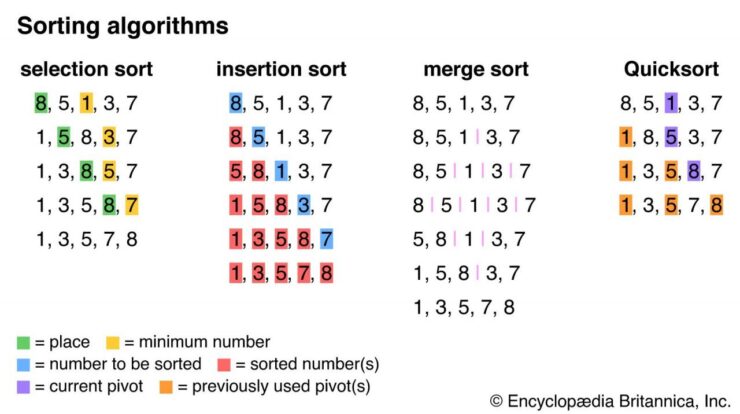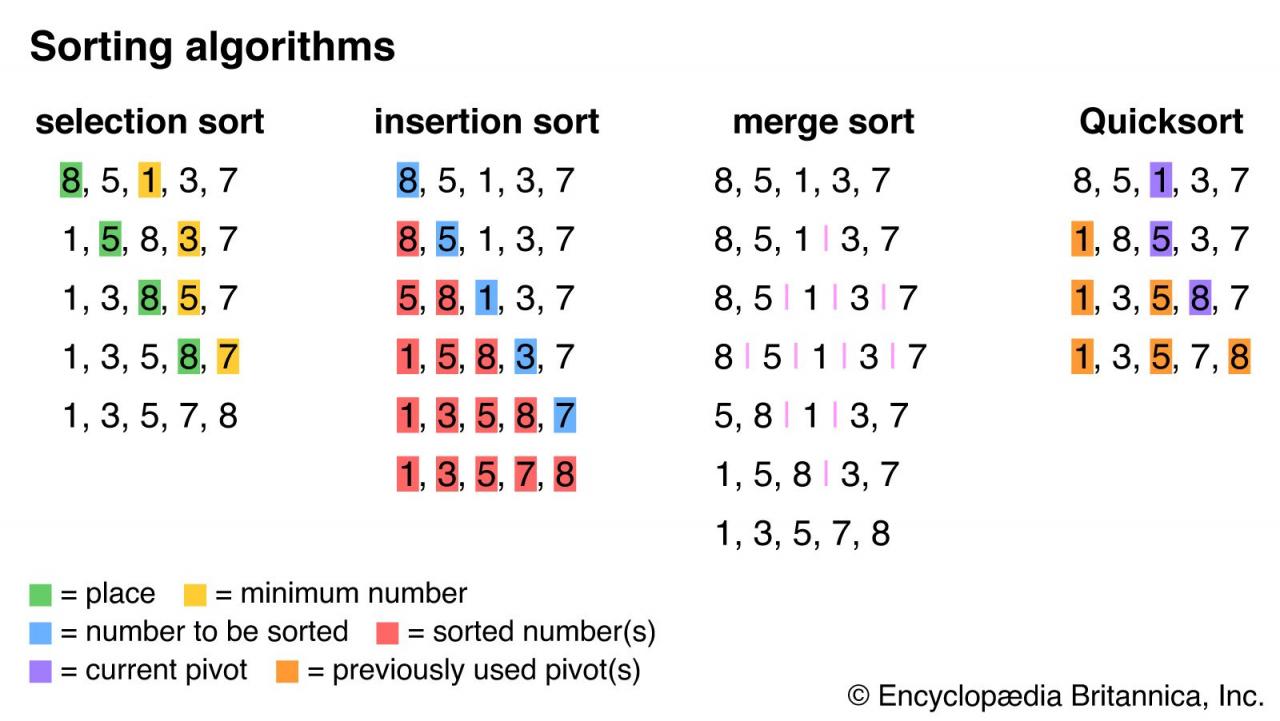
Sort definition lies at the heart of data organization, providing a systematic approach to arranging elements in a specific order, making them easier to retrieve, analyze, and process. From alphabetizing a list of names to ranking search results, sorting algorithms play a crucial role in various aspects of our daily lives.
The concept of sorting extends beyond its basic definition, encompassing a wide range of algorithms, applications, and advanced techniques. This comprehensive guide delves into the intricacies of sorting, exploring its types, efficiency, and practical implementations across different programming languages.
Sorting: A Fundamental Data Organization Technique: Sort Definition

Sorting is a crucial technique in data processing that involves arranging data in a specific order, making it easier to find, retrieve, and analyze information.
Types of Sorting Algorithms
There are various sorting algorithms, each with its unique approach and efficiency:
- Bubble Sort:Compares adjacent elements and swaps them if they are out of order, repeating until the entire list is sorted.
- Selection Sort:Finds the smallest unsorted element and swaps it with the first unsorted element, repeating until the list is sorted.
- Merge Sort:Divides the list into smaller sublists, sorts them recursively, and then merges them back together.
Applications of Sorting
Sorting algorithms have wide-ranging applications:
- Computer Science:Sorting data structures, such as arrays and linked lists, to optimize search and retrieval operations.
- Statistics:Organizing and analyzing data for statistical analysis, such as finding median, mode, and percentiles.
- Data Analysis:Preparing data for analysis by sorting it based on specific criteria, such as customer age or product sales.
Sorting in Different Programming Languages
Different programming languages provide sorting functions with varying syntax and features:
| Language | Function | Syntax |
|---|---|---|
| Python | sorted() | sorted(list, key=None, reverse=False) |
| Java | Arrays.sort() | Arrays.sort(array) |
| C++ | sort() | sort(begin, end) |
Advanced Sorting Techniques, Sort definition
For larger datasets, advanced sorting techniques offer improved efficiency:
- Radix Sort:Sorts elements based on individual digits or bits, making it efficient for large numbers of integers.
- Heap Sort:Builds a binary heap data structure and repeatedly extracts the maximum element, resulting in a sorted list.
Sorting Visualizations
Visualizations can enhance understanding of sorting algorithms:
Consider an animated GIF demonstrating the bubble sort algorithm, where elements are compared and swapped in real-time, providing a visual representation of the sorting process.
Final Review
In conclusion, sorting definition encompasses a vast and intricate field of study, with applications spanning multiple disciplines. Its significance lies in the ability to organize and retrieve data efficiently, enabling us to make sense of the vast amounts of information that surround us.
As technology continues to advance, the demand for efficient sorting algorithms will only grow, making it an essential skill for data scientists, programmers, and anyone seeking to harness the power of organized data.
FAQ Resource
What is the primary purpose of sorting?
Sorting aims to organize data in a specific order, making it easier to locate, compare, and analyze.
Name a few common sorting algorithms.
Bubble sort, selection sort, merge sort, quick sort, and heap sort are widely used sorting algorithms.
How does sorting contribute to efficient data processing?
Sorting algorithms optimize data retrieval by arranging elements in a logical order, reducing search time and improving the overall efficiency of data processing.





